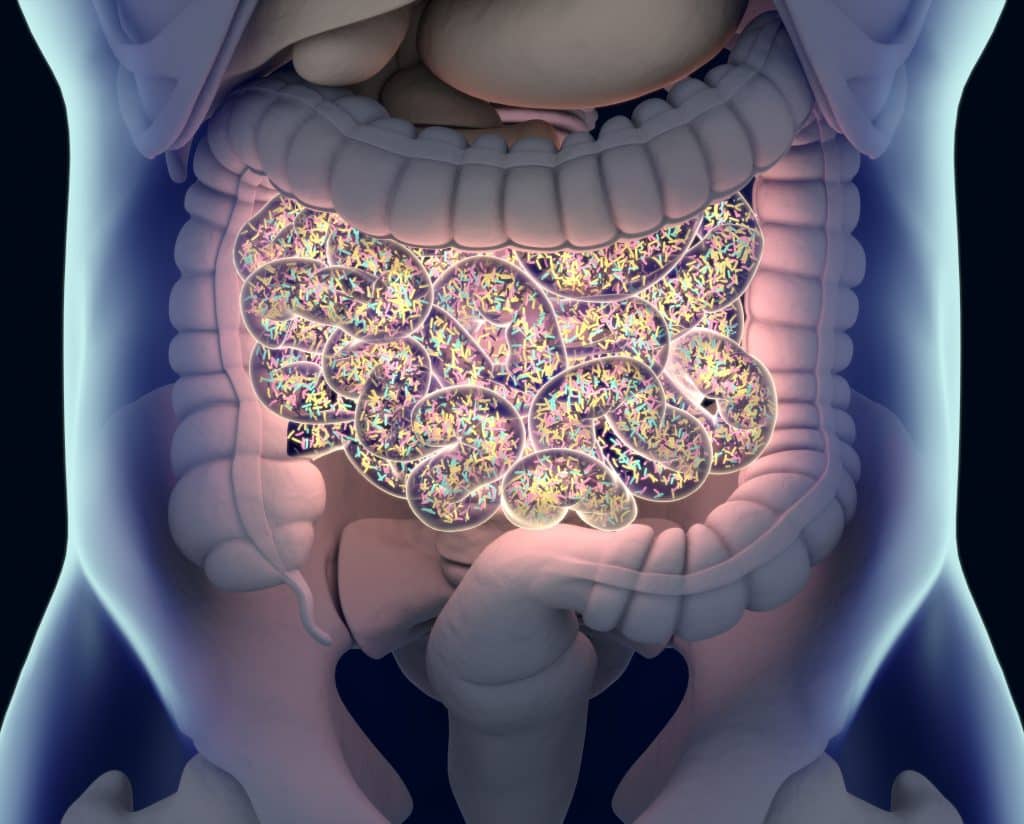The Reason Why You Keep Gaining Weight Will Surprise You
Gaining weight can be a frustrating and mysterious phenomenon, especially when you feel like you’re doing everything right. Despite maintaining a healthy diet and exercising regularly, many people find themselves continuing to gain weight. What is really going on? Realize that it’s not just food and exercise, as there are underlying factors at play that contribute to unexplained weight gain.
One such factor that causes seemingly indefinite weight gain is cellular dysfunction. Our cells are essential for our overall well-being, as they play a crucial role in regulating our metabolism and managing our weight. When our cells are functioning properly, they efficiently convert food into energy and eliminate waste from the body. However, when they become damaged or impaired, their ability to perform these tasks is hindered. This can lead to various health issues, including weight gain. If you are struggling with unexplained weight gain, remember that it may be a result of cellular dysfunction rather than any fault of your own.
Why You Keep Gaining Weight – Obesogens
Obesogens are chemical compounds that have been linked to weight gain and can be found in everyday products. These substances disrupt the body’s natural metabolic processes, leading to a slower metabolism and an increase in fat storage. Research has shown that exposure to obesogens can alter the function of hormones responsible for regulating metabolism, such as insulin, leptin, and thyroid hormones.1 2
These chemicals are often found in household cleaners, plastics, and certain foods. They have been found to disrupt the hormonal balance in the body, making it harder for individuals to maintain a healthy weight even without increasing their calorie intake.
Some well-known obesogens include BPA (found in plastic products), phthalates (found in cosmetics and fragrances), and PFAS (commonly found in non-stick cookware and stain-resistant materials). It is important to be aware of these obesogens and limit exposure to them in order to maintain a healthy metabolism and weight.3 4 5
According to a recent study conducted by Consumer Reports, an overwhelming majority of fast food samples (79%) were found to contain BPA, a harmful chemical often used in plastic containers. The same research also revealed that nearly all fast food and supermarket items tested positive for phthalates, another dangerous chemical commonly found in plastic products.6
In order to maintain a healthy weight and minimize exposure to these obesogens, it is important to take certain precautions. This includes avoiding the use of plastic containers with BPA, opting for natural cleaning products instead of harsh chemicals, limiting the use of commercial personal care products, and choosing organic foods whenever possible to reduce exposure.
Gaining Weight Is A Cellular Problem
Obesogens have been found to cause weight gain by disrupting the normal functioning of our cells. This is because they can bind to hormone receptors and either mimic or interfere with their signaling pathways. As a result, hormones like insulin, estrogen, and leptin are unable to regulate metabolism and energy balance properly.7 8 9
In addition, obesogens can also affect gene expression within our cells. By turning on or off certain genes involved in metabolic processes, they can alter our body’s ability to store and burn fat. For instance, some obesogens have been shown to activate genes that promote the growth of fat cells and inhibit those responsible for regulating metabolism.10
Research has revealed a concerning link between exposure to BPA and the activation of the Agouti gene, resulting in weight gain and increased fat mass. More alarming is that this effect can be passed down to future generations.
However, there is hope as recent findings have shown that by switching off this gene, we can reverse its negative impact. In fact, when mice were genetically modified to silence the Agouti gene, they experienced weight loss and returned to a healthier state. Furthermore, their offspring were leaner. These results demonstrate the potential for altering genetic factors to improve health outcomes for both current and future generations.11
The Influence Of The Microbiome On Gaining Weight
Obesogens not only affect our cellular function and gene expression, but they also have a significant impact on our gut microbiome. This complex community of microorganisms residing in our digestive tract plays a crucial role in our metabolism. However, obesogens can disrupt the delicate balance of these microorganisms, resulting in inflammation and weight gain.12

Are You Gaining Weight – Toxins May Be To Blame
It is well-known that toxins have a negative impact on the health of cellular membranes. These harmful substances cause inflammation in the membranes, leading to decreased permeability. This disrupts the flow of nutrients and waste removal within the cells, similar to how a damaged or blocked entrance gate would disrupt a city’s functioning.13
To better grasp this concept, think of each cell as a city with protective walls. When these walls are compromised, the city’s overall functioning suffers and waste and debris accumulate. Just like this scenario, when cellular membranes are inflamed, cells struggle to effectively remove metabolic waste and receive necessary materials for ATP synthesis. As a result, cell health deteriorates, and symptoms like unexplained weight gain may occur. Furthermore, these toxic byproducts can also trigger harmful genetic expressions that have been linked to weight gain.14
Hormone Resistance And Gaining Weight
Cellular membrane inflammation is a common roadblock in the proper functioning of hormones. This type of inflammation can lead to changes in the shape and structure of hormone receptors, hindering their ability to effectively communicate with cells. As a result, hormones like thyroid hormones, insulin, estrogen, testosterone, and leptin are unable to carry out their vital roles within the body. This phenomenon is referred to as hormone resistance, where the body’s key hormones are unable to unlock the full potential of cellular function.15
To better understand this concept, think of hormone receptors as locks and hormones as keys. When inflammation damages these receptors, they become dysfunctional and can no longer receive or transmit messages from hormones. This disrupts the delicate balance of cellular metabolism, even in the presence of sufficient hormone levels. Therefore, it is crucial to address and manage cellular membrane inflammation in order to maintain proper hormone function and overall health.
The hormone leptin plays a crucial role in regulating metabolism and maintaining a healthy body weight. Its primary function is to bind with cells and send signals that control appetite, energy expenditure, and fat storage. However, when the cellular membrane becomes inflamed, leptin’s ability to bind effectively is compromised, resulting in a condition known as leptin resistance. This can disrupt the proper functioning of cells and contribute to obesity and metabolic syndrome.16
Similarly, inflammation of the cellular membrane can also lead to thyroid hormone resistance. In this case, receptors are unable to respond properly to normal or elevated levels of T4 and T3 hormones. As a result, the body’s metabolic processes are disrupted, leading to weight gain and other symptoms. Therefore, maintaining a healthy cellular membrane is crucial for the proper functioning of hormones and overall metabolic health.17

The Reason Why You Keep Gaining Weight Will Surprise You
The key to uncovering the underlying cause of unexplained weight gain lies in tackling hormone resistance and cellular membrane inflammation head on. By following my 5Rs, we can effectively restore normal cellular function and achieve our desired weight goals. This comprehensive approach addresses the root issues instead of just treating symptoms, leading to long-term success in maintaining a healthy body weight.
R1 – Remove The Source
There are two main areas where action must be taken in order to address toxins – preventing external toxins from entering our bodies and addressing internal toxins that have accumulated over time.
Preventing external toxins from entering our bodies involves making conscious changes to our daily habits and environment. This includes being mindful of the foods we consume and opting for natural, organic options whenever possible. It also means reducing our exposure to chemicals found in household cleaning products, personal care items, and plastics.
R2 – Regenerating The Cellular Membrane
Toxins that have accumulated over the years can cause severe damage to cellular membranes. This damage can lead to unexplained weight gain and other health issues. In order to address this problem, it is crucial to repair the damaged membranes of all our trillions of cells.
One way to repair these membranes is through the process of lipid synthesis, which allows cells to produce new phospholipids and seamlessly incorporate them into damaged areas. While taking certain nutraceuticals is important, diet also plays a significant role in regenerating cellular membranes.
The composition of dietary fat is crucial in this process, as these tissues are primarily made up of fat. Consuming the right types of dietary fat provides the necessary building blocks for repair. Omega-6 and omega-3 fatty acids, in particular, are essential for maintaining proper membrane function. These polyunsaturated fats cannot be produced by our bodies and must be obtained through diet. They play a crucial role in regulating membrane fluidity and permeability. So, it is important to ensure that our diets include these essential fatty acids to support the repair of cellular membranes on a cellular level.18
R3 – Restoring Cellular Energy
Mitochondria are essential for the overall health and vitality of our cells. Not only do they produce ATP, the main source of energy for cellular processes, but they also aid in detoxifying harmful substances and regulate epigenetic expression, which is crucial for maintaining our well-being. Moreover, adequate levels of ATP support the effective functioning of glutathione, a potent antioxidant that helps eliminate toxins and prevent oxidative stress.19 20
To boost mitochondrial function and promote the growth of new mitochondria within our cells, there are specific nutraceuticals incorporated into the Pompa Program. These compounds work together to enhance and optimize mitochondrial activity, ensuring that our cells have a sufficient supply of energy for optimal performance.
R4 – Downregulate Cellular Membrane Inflammation
Cellular membrane inflammation can be triggered by a shortage of ATP, leading to an increase in enzymes that produce peroxynitrite (ONOO). This highly reactive oxidant promotes chronic inflammatory conditions by perpetuating the “NO/ONOO cycle.”21
To combat this harmful cycle, the use of nutraceuticals is crucial in resetting cellular membrane inflammation back to baseline. Without these specialized compounds, ongoing health issues may persist even with a healthy lifestyle.
R5 – Reestablishing Methylation
The decrease in methylation levels can have a significant impact on gene expression, particularly with the activation of “negative” genes. These genes are typically meant to remain dormant, but with reduced methylation, they become active and can contribute to various health issues such as unexplained weight gain.22
Why Do I Keep Gaining Weight?
After implementing these cellular optimization strategies, not only will you feel more energized and healthier overall, but you’ll also be able to finally stop gaining weight.
Learn all about the process of losing weight for good in my free webinar.
References
1 Mohajer N, Du CY, Checkcinco C, Blumberg B. Obesogens: How They Are Identified and Molecular Mechanisms Underlying Their Action. Front Endocrinol (Lausanne). 2021 Nov 25;12:780888. doi: 10.3389/fendo.2021.780888. PMID: 34899613; PMCID: PMC8655100.
2 Holtcamp W. Obesogens: an environmental link to obesity. Environ Health Perspect. 2012 Feb;120(2):a62-8. doi: 10.1289/ehp.120-a62. PMID: 22296745; PMCID: PMC3279464.
3 Beler M, Cansız D, Ünal İ, Üstündağ ÜV, Dandin E, Ak E, Alturfan AA, Emekli-Alturfan E. Bisphenol A reveals its obesogenic effects through disrupting glucose tolerance, oxidant-antioxidant balance, and modulating inflammatory cytokines and fibroblast growth factor in zebrafish. Toxicol Ind Health. 2022 Jan;38(1):19-28. doi: 10.1177/07482337211054372. Epub 2022 Jan 28. PMID: 35090367.
4 Chen MY, Liu HP, Cheng J, Chiang SY, Liao WP, Lin WY. Transgenerational Impact of DEHP on Body Weight of Drosophila. Chemosphere (2019) 221:493–9. doi: 10.1016/j.chemosphere.2018.12.193
5 Ding N, Karvonen-Gutierrez CA, Herman WH, Calafat AM, Mukherjee B, Park SK. Perfluoroalkyl and polyfluoroalkyl substances and body size and composition trajectories in midlife women: the study of women’s health across the nation 1999-2018. Int J Obes (Lond). 2021 Sep;45(9):1937-1948. doi: 10.1038/s41366-021-00848-9. Epub 2021 May 13. PMID: 33986457; PMCID: PMC8384652.
6 Friedman, L. F. (2024, January 4). The plastic chemicals hiding in your food. Consumer Reports. https://www.consumerreports.org/health/food-contaminants/the-plastic-chemicals-hiding-in-your-food-a7358224781/
7 Janesick AS, Blumberg B. Obesogens: an emerging threat to public health. Am J Obstet Gynecol. 2016 May;214(5):559-65. doi: 10.1016/j.ajog.2016.01.182. Epub 2016 Jan 29. PMID: 26829510; PMCID: PMC4851574.
8 Micić D, Polovina S, Micić D, Macut D. ENDOCRINE DISRUPTING CHEMICALS AND OBESITY: THE EVOLVING STORY OF OBESOGENS. Acta Endocrinol (Buchar). 2021 Oct-Dec;17(4):503-508. doi: 10.4183/aeb.2021.503. PMID: 35747866; PMCID: PMC9206156.
9 Blumberg B. Obesogens, stem cells and the maternal programming of obesity. J Dev Orig Health Dis. 2011;2(1):3–8.
10 Brulport A, Vaiman D, Chagnon MC, Le Corre L. Obesogen Effect of Bisphenol S Alters mRNA Expression and DNA Methylation Profiling in Male Mouse Liver. Chemosphere (2020) 241:125092. doi: 10.1016/j.chemosphere.2019.125092
11 Cimmino I, Fiory F, Perruolo G, Miele C, Beguinot F, Formisano P, Oriente F. Potential Mechanisms of Bisphenol A (BPA) Contributing to Human Disease. Int J Mol Sci. 2020 Aug 11;21(16):5761. doi: 10.3390/ijms21165761. PMID: 32796699; PMCID: PMC7460848.
12 Guo H, Yan H, Cheng D, Wei X, Kou R, Si J. Tributyltin exposure induces gut microbiome dysbiosis with increased body weight gain and dyslipidemia in mice. Environ Toxicol Pharmacol. 2018;60:202–208
13 Ammendolia, D.A., Bement, W.M. & Brumell, J.H. Plasma membrane integrity: implications for health and disease. BMC Biol 19, 71 (2021). https://doi.org/10.1186/s12915-021-00972-y
14 Zolkipli-Cunningham Z, Falk MJ. Clinical effects of chemical exposures on mitochondrial function. Toxicology. 2017 Nov 1;391:90-99. doi: 10.1016/j.tox.2017.07.009. Epub 2017 Jul 27. PMID: 28757096; PMCID: PMC6078194.
15 Straub RH. Interaction of the endocrine system with inflammation: a function of energy and volume regulation. Arthritis Res Ther. 2014 Feb 13;16(1):203. doi: 10.1186/ar4484. PMID: 24524669; PMCID: PMC3978663.
16 Gruzdeva O, Borodkina D, Uchasova E, Dyleva Y, Barbarash O. Leptin resistance: underlying mechanisms and diagnosis. Diabetes Metab Syndr Obes. 2019 Jan 25;12:191-198. doi: 10.2147/DMSO.S182406. PMID: 30774404; PMCID: PMC6354688.
17 Pappa T, Refetoff S. Resistance to Thyroid Hormone Beta: A Focused Review. Front Endocrinol (Lausanne). 2021 Mar 31;12:656551. doi: 10.3389/fendo.2021.656551. PMID: 33868182; PMCID: PMC8044682.
18 Gu C, Philipsen MH, Ewing AG. Omega-3 and -6 Fatty Acids Alter the Membrane Lipid Composition and Vesicle Size to Regulate Exocytosis and Storage of Catecholamines. ACS Chem Neurosci. 2024 Feb 21;15(4):816-826. doi: 10.1021/acschemneuro.3c00741. Epub 2024 Feb 12. PMID: 38344810; PMCID: PMC10884999.
19 Kwon DH, Cha HJ, Lee H, Hong SH, Park C, Park SH, Kim GY, Kim S, Kim HS, Hwang HJ, Choi YH. Protective Effect of Glutathione against Oxidative Stress-induced Cytotoxicity in RAW 264.7 Macrophages through Activating the Nuclear Factor Erythroid 2-Related Factor-2/Heme Oxygenase-1 Pathway. Antioxidants (Basel). 2019 Apr 1;8(4):82. doi: 10.3390/antiox8040082. PMID: 30939721; PMCID: PMC6523540.
20 Pastore A, Federici G, Bertini E, Piemonte F. Analysis of glutathione: implication in redox and detoxification. Clin Chim Acta. 2003 Jul 1;333(1):19-39. doi: 10.1016/s0009-8981(03)00200-6. PMID: 12809732.
21 Pall M. L. (2013). The NO/ONOO-cycle as the central cause of heart failure. International journal of molecular sciences, 14(11), 22274–22330. https://doi.org/10.3390/ijms141122274
22 Dhar GA, Saha S, Mitra P, Nag Chaudhuri R. DNA methylation and regulation of gene expression: Guardian of our health. Nucleus (Calcutta). 2021;64(3):259-270. doi: 10.1007/s13237-021-00367-y. Epub 2021 Aug 16. PMID: 34421129; PMCID: PMC8366481.
Disclaimer: All rights reserved. Information provided is for general purposes and not intended to provide medical advice, diagnosis, or treatment. Consult your healthcare professional for medical concerns. About Dr. Pompa




